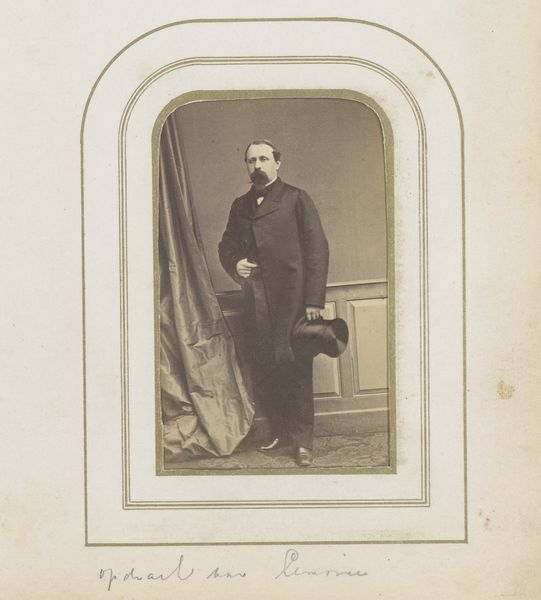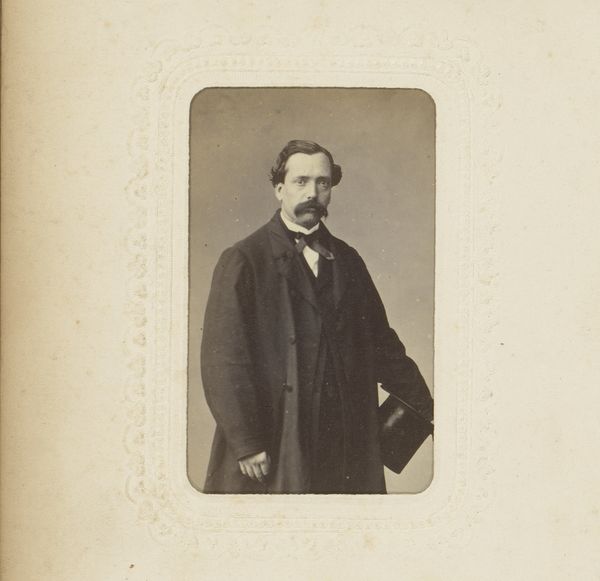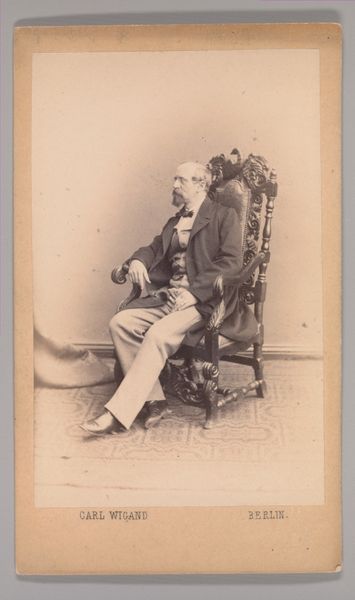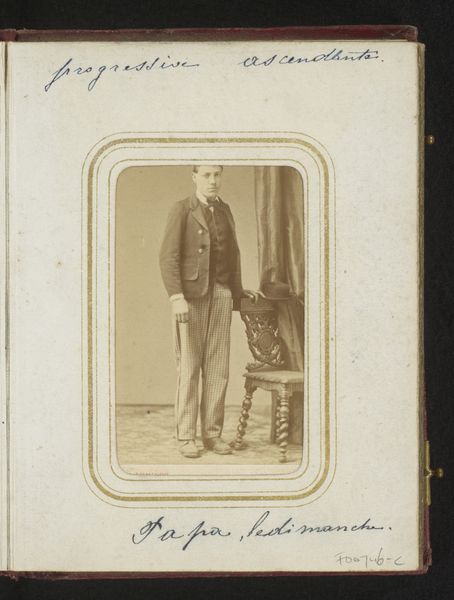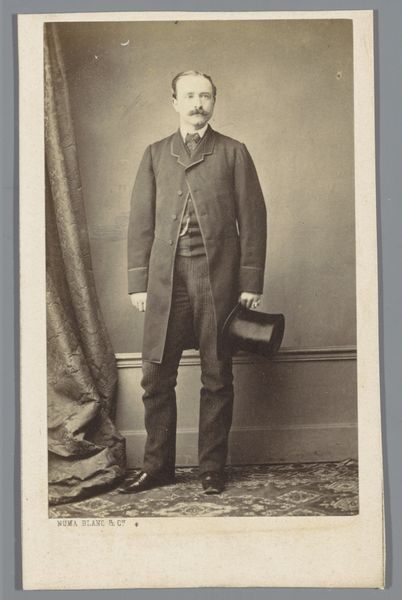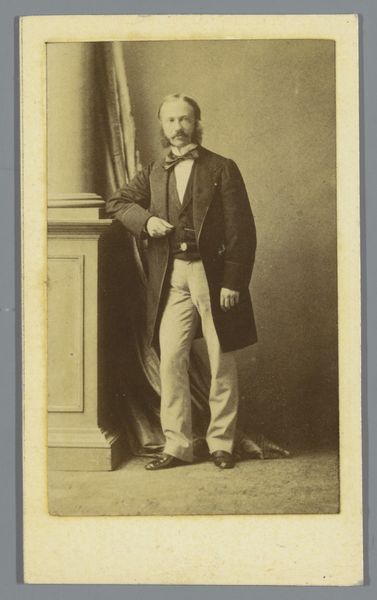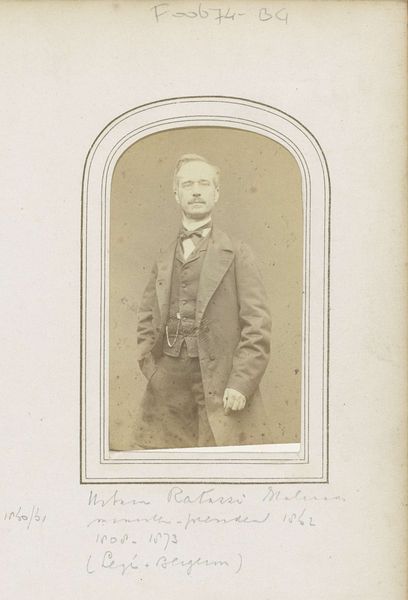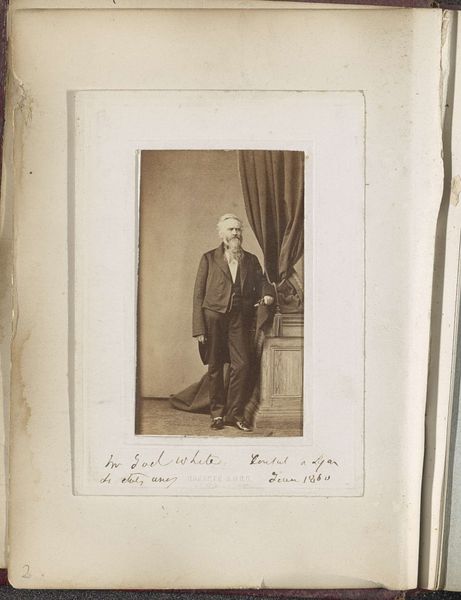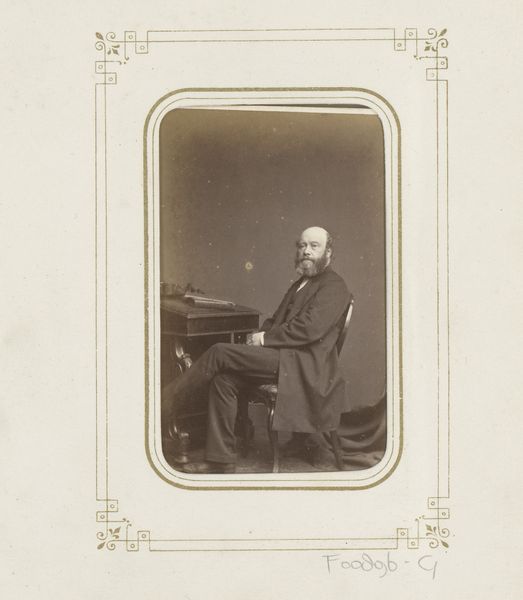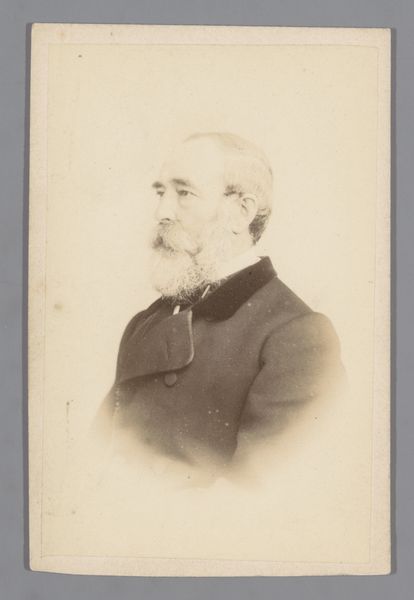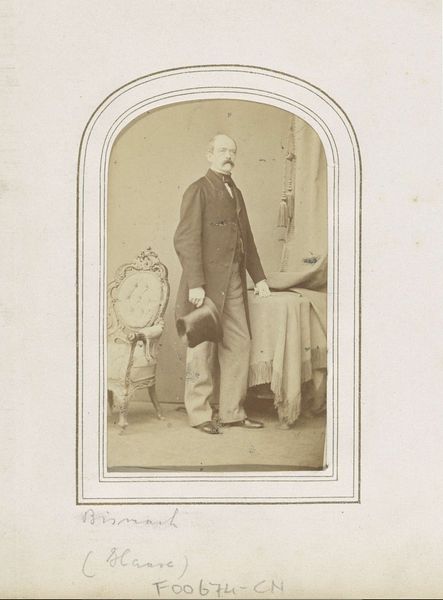
Portret van een man met wandelstok, staand bij een tafel met hoge hoed 1860 - 1872
0:00
0:00
daguerreotype, photography
#
portrait
#
daguerreotype
#
photography
Dimensions: height 83 mm, width 50 mm
Copyright: Rijks Museum: Open Domain
Curator: The portrait before us, dating roughly from 1860 to 1872, presents a distinguished gentleman. The piece, titled "Portret van een man met wandelstok, staand bij een tafel met hoge hoed" captures its subject through the photographic medium of the daguerreotype, courtesy of Charles Billotte & Cie. Editor: Well, my first impression is…serious. He looks a tad melancholy, perhaps? There's a formality about the staging—the cane, the hat perched just so. He seems caught between wanting to appear dignified and, dare I say, revealing a hint of weariness. Curator: It's fascinating how the daguerreotype process itself adds to that sense of gravitas. Each image was unique, made on a silvered copper plate. The subject had to remain still for a considerable time, making the process as much about capturing an image as it was a social ritual, especially amongst the rising bourgeois. The frock coat suggests societal respectability and industriousness. Editor: The table drapes lend a curious domesticity. Was he interrupted from some work, perhaps writing letters or pouring brandy, to strike this solemn pose? I’m inventing stories now, I know, but the setting practically begs for speculation. Curator: Precisely! And consider how carefully each element is staged: the subtle sheen on the gentleman's coat, achieved by manipulating light during exposure and development, the precise detail rendered in the photographic chemistry. It hints at the commercial value placed on image-making and self-representation. Editor: Absolutely! It’s that dance between art and commerce, always intriguing. There's a sort of intimacy as well, though a carefully constructed one, since there was only one finished photo made, never prints like one would create today! It really leaves one wondering about his place in history. Who was he? What was his story? I feel a pang of connection to him that's not all that easily put in words, wouldn’t you agree? Curator: Yes, although, for me, the wonder lies in the materiality itself. Seeing the techniques that Billotte and others were refining during the daguerreotype's final period of mass consumption invites critical speculation about its lasting legacy upon imaging and social communication practices. It has certainly offered us some very revealing insights. Editor: A perfect note to conclude on—a captured image, speaking volumes across the decades about self-presentation, materiality, and of course, a tiny little bit of wistful contemplation for us, here and now!
Comments
No comments
Be the first to comment and join the conversation on the ultimate creative platform.
